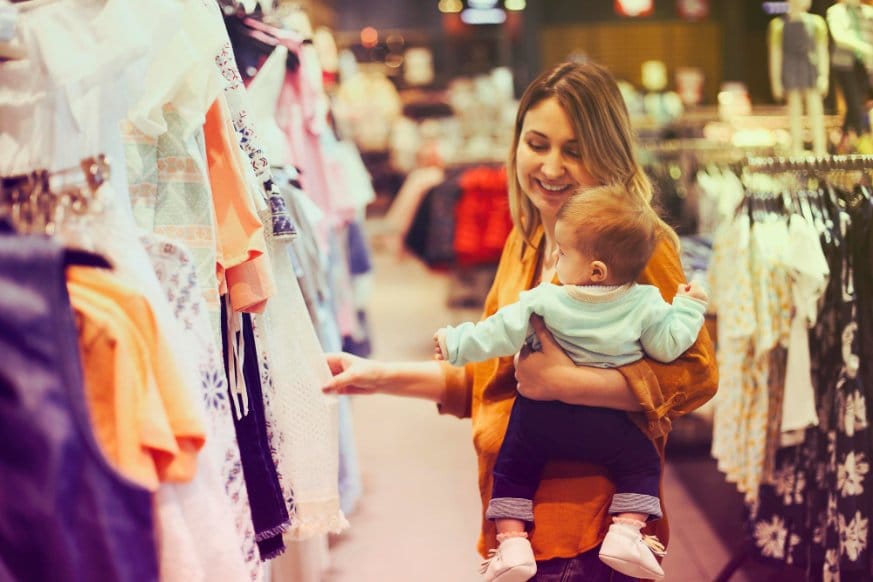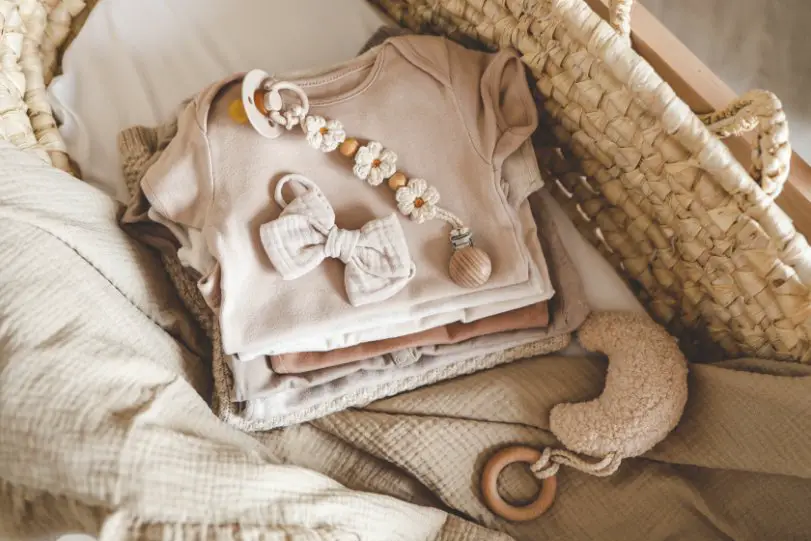Your comprehensive guide to understanding baby clothing sizes, brand differences, and smart shopping strategies for growing infants
Table of Contents
- Understanding Infant Clothing Size Basics
- Age, Weight, and Height: Key Sizing Factors
- Brand-Specific Sizing Differences
- Decoding Infant Clothing Size Charts
- Types of Infant Clothing and Their Sizing
- Accessories: Shoes, Socks, and Hats
- Seasonal Sizing Strategies
- Common Sizing Mistakes to Avoid
- Ensuring Comfort and Safety
- Smart Shopping and Care Tips
- Frequently Asked Questions
- Conclusion
Understanding Infant Clothing Size Basics
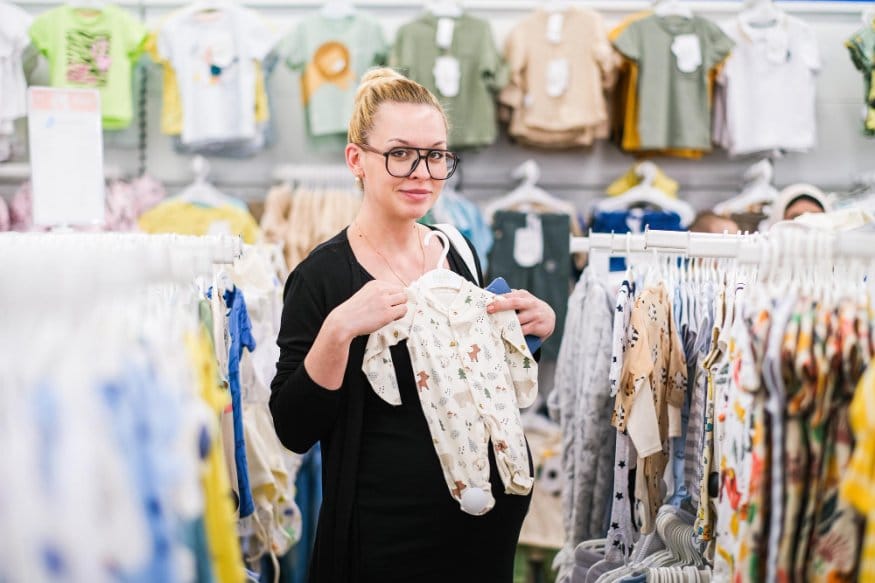
Baby clothes sizing can be confusing because it’s based on several factors like age, weight, and length. The key to success is understanding how sizing differs from other types of clothing and what really determines the right fit for your baby.
How Infant Clothes Sizing Differs From Other Baby Clothing
Baby clothes sizes are usually listed by age, such as “0-3 months” or “6-9 months.” However, these sizes are only a rough guide and don’t always match a baby’s actual size. Unlike toddler or children’s clothing, where sizes may go by measurements like height or chest, infant sizes mostly rely on weight and length.
For example, newborn (NB) clothes often fit babies up to 8 pounds, while 3-month sizes cover about 8 to 12 pounds. This system can cause confusion since babies grow at different rates. Checking both age and weight on the tag helps ensure a better fit, as some bigger or smaller infants can quickly size out or stay in a size longer than the label suggests.
What Determines Baby Clothing Size
Most brands create size charts using weight and length, not just age. For instance, a “6M” onesie might fit babies weighing between 12 to 16 pounds, even if they aren’t exactly six months old.
Manufacturers may have their own fit, so one brand’s 6-month clothing could be smaller or larger than another’s. Because of these differences, always compare your baby’s current weight and length to the size guide printed by the brand.
| Size Label | Weight Range | Length Range | Typical Age |
|---|---|---|---|
| Preemie | Up to 5 lbs | Up to 17 inches | Premature babies |
| Newborn | 5-8 lbs | 17-21 inches | 0-1 month |
| 0-3 Months | 8-12 lbs | 21-24 inches | 0-3 months |
| 3-6 Months | 12-16 lbs | 24-26 inches | 3-6 months |
| 6-9 Months | 16-20 lbs | 26-28 inches | 6-9 months |
Because fit matters for safety and comfort, always make sure that clothing isn’t too tight or too loose.
Clothing Labels and Terminology
Infant clothing labels can be confusing at first. Common terms on tags include:
- NB: Newborn
- 0-3M, 3-6M, 6-9M: Age ranges in months
- Preemie/P: For premature babies
Labels often state both the target age and the weight range. However, “up to” on a label means the clothing will usually fit only until your baby reaches that limit. Some brands use “T” for “toddler,” but infant sizes don’t use this. Instead, they focus on the first few months, such as NB, 3M, or 6M.
Age, Weight, and Height: Key Sizing Factors
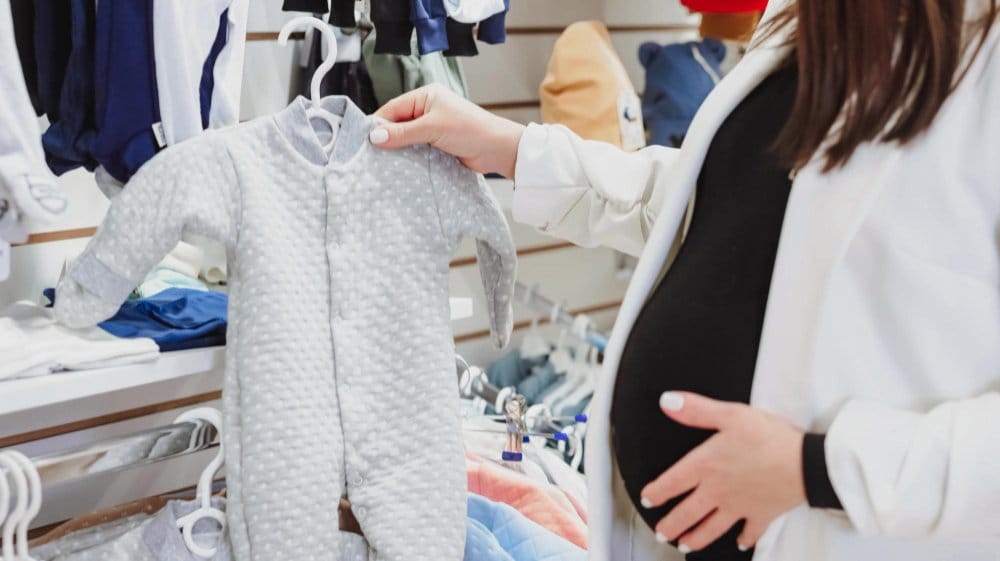
When shopping for infant clothes, the three main factors to consider are age, weight, and height. Size charts on clothing tags usually show all three, but brands may measure them differently.
Why Manufacturers Use Different Size Standards
Not every brand uses the same size chart for babies. Some companies focus mostly on age, while others use height or weight as the main factor. This happens because babies can grow at different rates and the average for a three-month-old in one country might be different in another.
For example:
- A “0-3 months” onesie might fit a baby up to 8 pounds and 21 inches in one brand
- Another brand may list 0-3 months for babies up to 12 pounds and 24 inches
This is why you should always check both the height and weight guides on the label, not just the age range. It helps you avoid buying something too tight or too loose. The main goal is to make sure the baby is comfortable, has room to move, and isn’t squeezed by seams or elastic.
When to Size Up or Size Down
If your baby is near the top of the size range in a chart, size up. Babies grow fast, and a little extra room is better than a snug fit that could leave marks or restrict movement. If you notice red lines on your baby’s skin after wearing something, that’s a sign to choose a bigger size.
On the other hand, if clothes look too loose or sleeves cover the hands, consider sizing down. Loose clothes can snag or bunch up, which is not safe for a small infant. Following the brand’s size chart and checking up-to-date measurements helps you make these choices.
Brand-Specific Sizing Differences
One of the biggest challenges in baby clothing is that different brands can have significantly different sizing, even for the same age label. Understanding these brand differences can save you from costly returns and ensure better fits.
Carter’s
Sizing: Generally runs larger and longer
Quality: Good quality for the price point
Best for: Tall or average-sized babies
Note: 3-month size fits 9-12.5 lbs, 21.5-24 inches
Baby Gap
Sizing: Runs notably larger
Quality: Higher quality, softer fabrics
Best for: Babies who need room to grow
Note: 3-6 month size fits 12-17 lbs, 23-27 inches
Gerber
Sizing: Runs significantly smaller
Quality: Budget-friendly but thinner fabric
Best for: Smaller babies or layering
Note: Often need to size up 1-2 sizes
Target (Cat & Jack, Cloud Island)
Sizing: Generally true to size
Quality: Good value for money
Best for: Budget-conscious parents
Note: Consistent sizing across Target brands
European vs. US Sizing
Many popular brands use European sizing, which is based on centimeters rather than age ranges. European sizes show the maximum height per size:
| European Size | Height (cm) | US Equivalent | Approximate Age |
|---|---|---|---|
| 50 | 45-50 cm | Newborn | 0-1 month |
| 56 | 51-56 cm | 0-3 months | 0-3 months |
| 62 | 57-62 cm | 3-6 months | 3-6 months |
| 68 | 63-68 cm | 6-9 months | 6-9 months |
Decoding Infant Clothing Size Charts
Baby clothing size charts can look confusing, but knowing what to check makes shopping much easier. Focus on the basic size labels, specific age and measurement ranges, and how sizes compare across different regions.
Interpreting Common Size Chart Categories
Most infant clothes use categories such as Newborn, 0-3 Months, 3-6 Months, and so on. These labels are based on age, height, and weight. Sometimes, baby’s weight or length matters more than age alone.
For example, Newborn often fits babies up to 8 pounds, but a larger newborn may need 0-3 Months. Look for size charts that show height and weight, not just age, to make sure clothes will fit.
Understanding Size Ranges From Newborn To 24 Months
When shopping, you’ll see baby clothing size ranges usually start at Newborn and go up to 24 Months. Each range spans a few pounds and inches, and overlaps sometimes. This helps if your baby grows faster or slower than average.
Newborn clothing is for the tiniest babies, and after that, the categories move up: 0-3 Months, 3-6 Months, 6-9, 9-12, 12-18, and 18-24 Months. Some brands skip the 9-month size and just go from 6 to 12 months.
If your baby is near the end of a range, buy the next size up. Babies often outgrow sizes quickly, so slightly bigger clothes work better. Checking the weight and height limits on brand charts helps you avoid buying the wrong size.
Quick Sizing Decision Flow
Types of Infant Clothing and Their Sizing
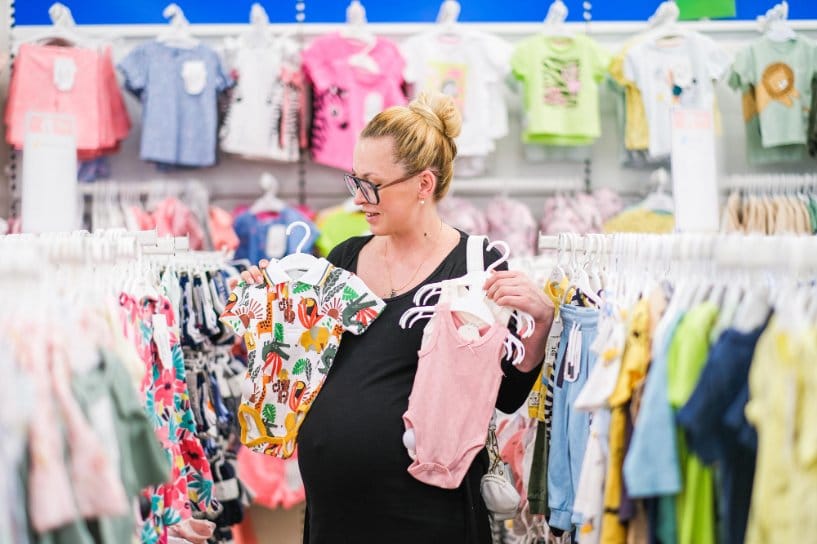
Sizing for infant clothing depends on more than just age. Weight, height, and specific clothing types all play important roles in helping you find a comfortable fit for your baby.
Newborn Clothing and Premature Sizes
Newborn clothing is labeled as NB and is generally made for babies weighing up to 8 pounds (about 3.6 kg). For infants who are born early, “preemie” or “premature” sizes are available, which fit babies under 5 or 6 pounds (2.3-2.7 kg). Hospitals and specialty stores often offer these smaller sizes.
NB and preemie sizes have shorter lengths and smaller openings for arms and legs. This ensures the baby is snug and safe. Tags might show both weight and height ranges, which helps you pick the right size. If a baby grows quickly, they could outgrow NB clothes in just a few weeks.
Typical newborn and preemie clothing types include:
- Sleepers and gowns
- Hats
- Mittens
- Snap-up shirts
Checking the baby’s current weight and length is more accurate than judging by age alone. Some brands may run smaller or larger, so looking at size charts helps.
Onesies, Bodysuits, and Sleepwear Sizing
Onesies, bodysuits, and sleepwear are staples in most baby wardrobes. Clothing in this category is mostly sized by both months and weight. Common size labels include 0-3 months, 3-6 months, and 6-9 months.
Most brands use weight and sometimes length to define each size. For example, a 0-3 month bodysuit usually fits babies who weigh 8-12 pounds (3.6-5.4 kg) and up to 23 inches (58 cm) long.
| Size Label | Baby’s Weight | Baby’s Length | Best Use |
|---|---|---|---|
| 0-3 Months | 8-12 lbs | Up to 23 in | Daily wear, layering |
| 3-6 Months | 12-16 lbs | 23-27 in | Active babies |
| 6-9 Months | 16-20 lbs | 27-28.5 in | Crawling, sitting up |
Bodysuits and onesies stretch a little, giving babies room to move. Sleepwear might run slightly bigger for safety and comfort. Always check if the design is snug, especially for sleep, since loose clothing isn’t safe for newborns.
Accessories: Shoes, Socks, and Hats
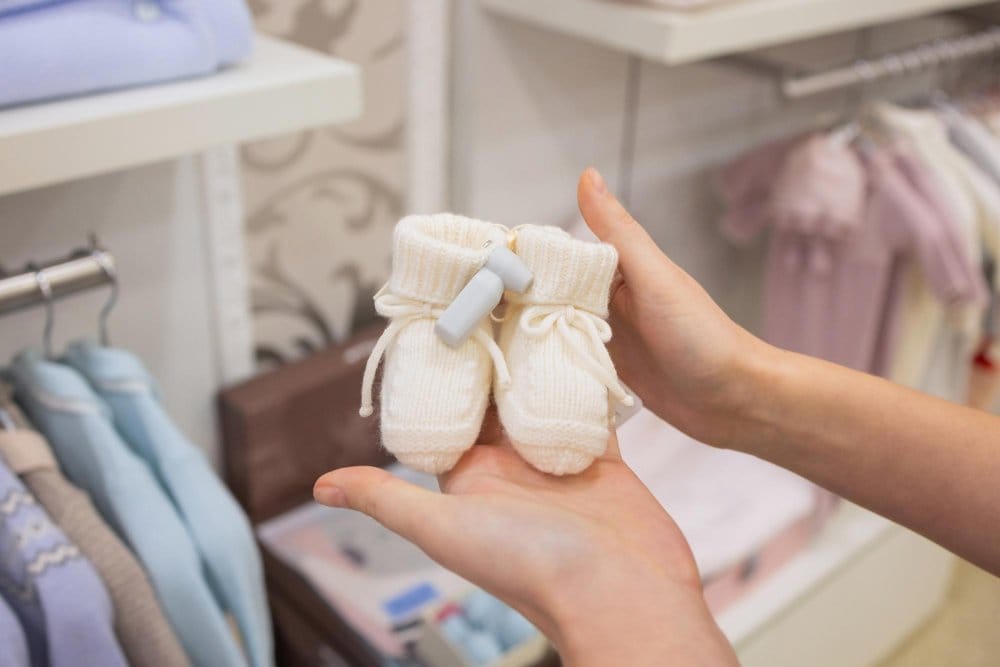
When picking accessories like shoes, socks, or hats for infants, pay close attention to both fit and comfort. These items need to match your baby’s current size, not just their age, to prevent slips, discomfort, or overheating.
Sizing and Fit for Infant Shoes
Baby shoe sizes are usually listed by age ranges such as “0-3 months” or “3-6 months,” but age alone isn’t the best way to choose. Measuring your baby’s foot length in centimeters or inches gives a much more accurate fit. Shoe size charts from brands often list both foot length and the related size, making selection easier.
Babies’ feet are soft and still growing, so always look for shoes with wide openings, flexible soles, and enough wiggle room for toes. Most baby shoes should be easy to put on and take off without pinching. For early walkers, non-slip soles help reduce slips.
| Age (Months) | Foot Length (inches) | US Size | Notes |
|---|---|---|---|
| 0-3 | 3.5 | 1 | Soft soles preferred |
| 3-6 | 3.75 | 2 | Allow toe movement |
| 6-9 | 4 | 3 | Consider grip for crawlers |
Check the fit every few weeks, as babies’ feet grow rapidly. If the shoe feels tight or leaves marks on the skin, it is too small and needs replacing.
Choosing the Right Size Socks
For socks, go by your baby’s foot length rather than their age. Sizing can vary across brands, so often check size charts first. Socks that are too tight can restrict movement and leave marks. Socks that are too loose may twist or slip off easily.
Look for socks made with soft, stretchy materials. They should cover the foot and ankle securely without bunching. Some brands offer socks with anti-slip grips, which are helpful when your baby starts crawling or pulling up.
How to Measure for Baby Hats
To find the right hat size, measure around your baby’s head with a soft tape measure just above the eyebrows and ears. Compare this measurement to the brand’s hat size chart, usually shown in inches or centimeters.
A good-fitting hat should be snug, but not tight. It should not leave marks on the skin or slide over your baby’s eyes. In cold weather, pick hats that cover the ears. In warmer weather, use lighter hats and check for breathability.
| Age (Months) | Head Circumference (inches) | Hat Size |
|---|---|---|
| 0-3 | 13-15 | Newborn |
| 3-6 | 15-17 | Small |
| 6-12 | 16-18 | Medium |
Seasonal Sizing Strategies
The season when your baby will wear specific sizes plays a crucial role in sizing decisions. Planning for seasonal changes helps you buy the right clothes at the right time and avoid waste.
Spring and Summer Sizing Tips
For warmer months, focus on breathable fabrics and loose-fitting clothes that allow air circulation. Summer babies need:
- Lightweight bodysuits: Cotton fabrics work best for hot days
- Sun protection: Wide-brimmed hats and UV-protective clothing
- Minimal layers: Single-layer outfits to prevent overheating
- Room for diapers: Summer clothes should account for bulkier swim diapers
When buying summer clothes in larger sizes, remember that babies grow approximately 2-3 inches every 3-4 months. A summer outfit bought in 6-month size during winter might be too small by the time hot weather arrives. Use our size prediction calculator to plan seasonal purchases more accurately.
Fall and Winter Sizing Considerations
Cold weather requires layering, which affects sizing decisions significantly:
- Layer-friendly sizing: Buy slightly larger sizes to accommodate long-sleeve undershirts
- Outerwear planning: Winter coats need room for indoor clothes underneath
- Footed pajamas: Winter sleepwear tends to run smaller, so size up
- Accessories: Hats, mittens, and booties in coordinating sizes
Timing Your Purchases
Smart timing can save money and ensure proper fit:
- End-of-season sales: Buy next year’s clothes at 50-70% off
- Growth projection: Most babies double their birth weight by 6 months – use our growth prediction tool to estimate future sizes
- Seasonal transitions: Plan for size changes during weather transitions
Common Sizing Mistakes to Avoid
Learning from common mistakes can save you money and ensure your baby stays comfortable. Here are the most frequent sizing errors parents make and how to avoid them.
Buying Too Many Newborn Sizes
Many first-time parents stock up on newborn clothes, only to find their baby outgrows them within weeks. Some babies are born larger than newborn size and may never wear NB clothes at all.
Ignoring Brand-Specific Sizing
Assuming all brands size the same way leads to poor fits and returns. Always check each brand’s specific size chart before purchasing, especially when shopping online.
Shopping Too Far Ahead
Buying clothes 3+ seasons ahead often results in:
- Wrong seasonal timing (summer clothes ready in winter)
- Incorrect size prediction
- Style preferences changing
- Receiving duplicate gifts
Overlooking Shrinkage
Many parents forget that baby clothes shrink, especially 100% cotton items. Always account for 5-10% shrinkage when choosing sizes, or follow proper care instructions to minimize shrinking.
Focusing Only on Cute Factor
While adorable outfits are tempting, prioritize:
- Functionality over fashion
- Easy diaper access
- Comfortable fabrics
- Safety features
Ensuring Comfort and Safety
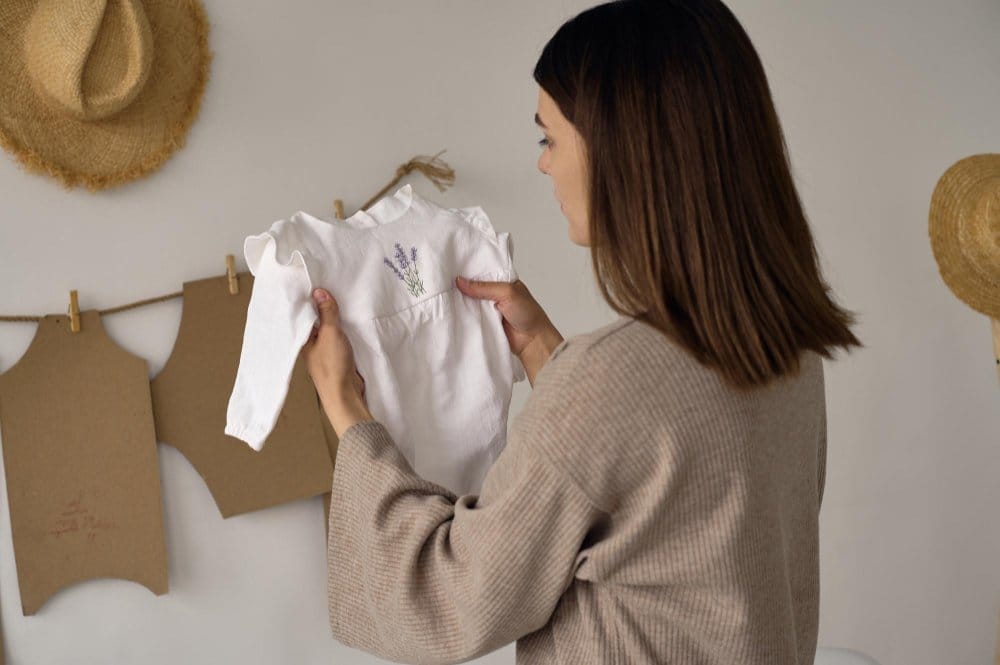
When choosing baby clothes, pay attention to what keeps your child comfortable and safe. Small details like fabric type and proper fit make a big difference every day.
The Importance Of Fabric Choice And Stretch
Always look for soft, breathable fabrics like cotton for your baby’s clothes. Natural fibers keep your baby’s skin cool and help prevent rashes. Avoid rough materials or heavy dyes since these can irritate sensitive skin.
Stretchy clothing is easier to put on and take off. Snaps and zippers can make diaper changes quicker, but make sure nothing scratches or pokes your baby. Check for tags, seams, or tight elastics around the waist and wrists that might leave marks.
Recognizing Signs Of Improper Fit
Watch for red marks on your baby’s skin, especially around wrists, ankles, and belly. Tight clothing that leaves lines means it’s too small and could restrict movement or cause discomfort. Clothes should not bunch up, press into the skin, or make it hard for your baby to move freely.
If snaps pop open or you struggle to close zippers, the clothes may be too tight. Loose clothing can be just as unsafe if it bunches or rides up, especially around the face.
Your safety checklist should include:
- Smooth fit: Clothing stays in place without pinching
- Easy movement: Your baby can stretch arms and legs freely
- No red marks: Check after wearing for any pressure lines
- Proper neck openings: Not too tight or too loose around the neck
If you notice any of these warning signs, switch to the next size right away.
Smart Shopping and Care Tips
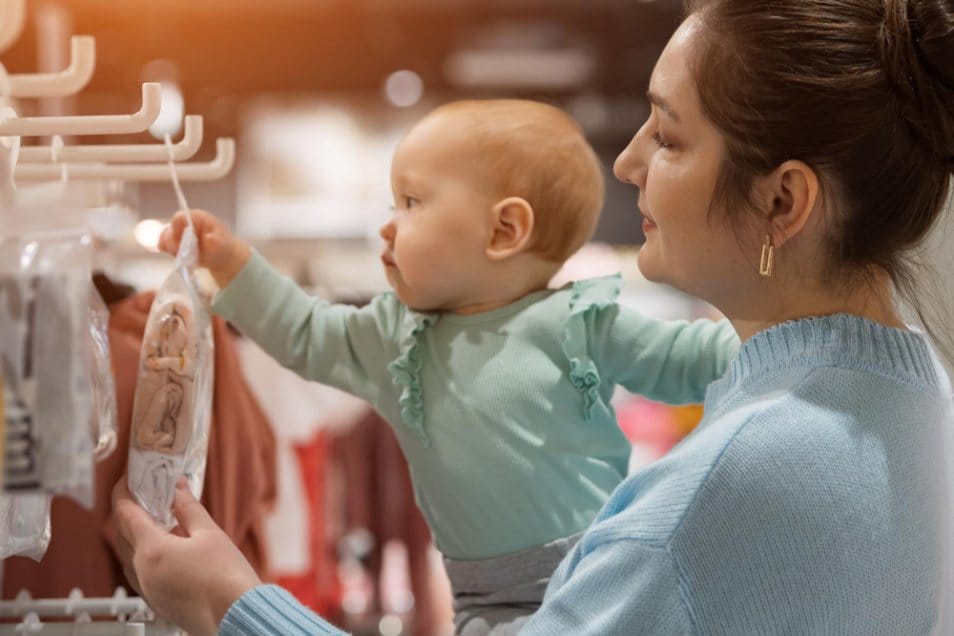
When picking out baby clothes, plan for how fast babies grow and keep in mind how easy the clothes are to care for and adjust. Picking the right sizes and using thoughtful care helps you avoid extra costs and keeps your baby comfortable.
Shopping For Growth Spurts
Babies grow fast, especially in their first year. Always check the size chart on the label, since brands use different measurements. If your baby is close to outgrowing a size, buy the next size up to make the clothes last longer.
Look for clothing made with stretchy fabric or with adjustable features, such as fold-over cuffs or expandable necklines. This helps the clothes fit for a longer time. To save money, buy a mix of basic pieces and season-appropriate styles, so you can layer as needed when the weather changes.
Also consider shrinkage. Many baby clothes shrink after washing, especially if made of cotton, so avoid anything that would be too tight after a wash cycle. Buying quality baby clothes from reputable retailers often means better construction and less shrinkage.
Money-Saving Strategies
- End-of-season sales: Buy next season’s clothes at deep discounts
- Outlet shopping: Brand outlets offer quality at lower prices
- Hand-me-downs: Gently used baby clothes work great for fast-growing infants
- Multi-packs: Basic onesies and sleepers cost less in bulk
- Membership programs: Store rewards and baby registries offer discounts
- Smart planning: Use our clothing size calculator to buy the right sizes at the right time
Caring For And Adjusting Infant Clothing
To make baby clothes last, follow care instructions on the tag. Always wash new items before your baby wears them, using a mild detergent that is safe for sensitive skin.
Wash clothes in cold water and choose a gentle cycle to protect the fabric. If snaps, zippers, or buttons are damaged, fix them right away. For clothes that seem a bit small, you can use clothing extenders or remove tight elastic waistbands.
Storing clothing by size in clear bins makes it easy for you to rotate outfits as your baby grows. Donate or pass on gently used items to keep your space organized. These habits help you make the most of each piece and keep your baby’s wardrobe clean and comfortable.
Frequently Asked Questions
Conclusion
Understanding infant clothing sizes doesn’t have to be complicated when you know the key principles. Success comes from focusing on your baby’s weight and length rather than just age, understanding that brands size differently, and planning for rapid growth spurts.
Essential Sizing Strategies:
- Prioritize measurements over age: Always check weight and length against brand-specific charts
- Learn your preferred brands: Stick with brands that fit your baby well and understand their sizing patterns
- Size up when in doubt: It’s better to have slightly loose clothes than tight ones that restrict movement
- Plan for seasons: Account for layering needs and seasonal timing when buying ahead
- Buy strategically: Focus on 0-3 month sizes over newborn, and don’t overbuy in any single size
Safety and Comfort Priorities:
- Choose soft, breathable fabrics that won’t irritate sensitive skin
- Watch for red marks or restrictions that indicate clothes are too tight
- Ensure easy diaper access with functional snap placements
- Remove any tags or rough seams that could cause discomfort
Money-Saving Tips:
- Shop end-of-season sales for next year’s clothes
- Accept hand-me-downs for rapidly outgrown sizes
- Focus spending on quality basics rather than trendy pieces
- Use size charts religiously to reduce returns
Remember that every baby grows at their own pace. What works for one child may not work for another, even within the same family. Stay flexible, keep receipts for exchanges, and don’t stress if you need to adjust your approach as you learn your baby’s specific growth patterns.
The most important goal is keeping your baby comfortable, safe, and appropriately dressed for their developmental stage and the weather. With these guidelines and a little experience, you’ll quickly become confident in choosing the right sizes for your growing infant.

